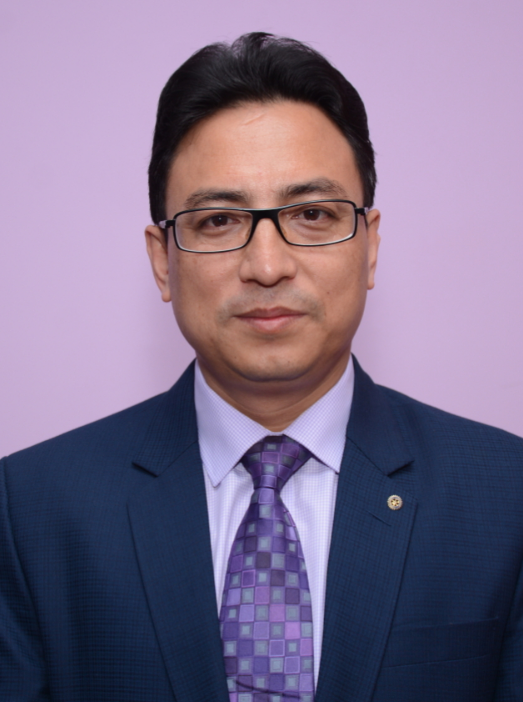Table of Contents
ToggleI. Introduction
This blog aims to provide a comprehensive exploration of breast cancer, and the concept of a “cure.” Breast cancer is a global health concern that affects millions of people each year, making it one of the most common and feared forms of cancer.
A. The prevalence of breast cancer worldwide
Breast cancer knows no boundaries, affecting women and men of all ages and ethnicities. According to the World Cancer Research Fund, breast cancer is the most commonly diagnosed cancer in women worldwide, with an estimated 2.3 million new cases in 2020 alone. This staggering prevalence highlights the urgent need for answers regarding the potential for a complete cure.
B. The importance of understanding the possibility of a full cure
The diagnosis of breast cancer can be a life-altering moment, filled with fear and uncertainty. Understanding the possibility of a full cure offers hope and empowers individuals to make informed decisions about their health. While advances in medical science have led to improved treatments and outcomes, the question of whether breast cancer can be fully cured remains at the forefront of cancer research.
II. The Concept of a “Cure” in Breast Cancer: Understanding the Possibilities
Breast cancer is a complex disease that affects millions of individuals worldwide. When it comes to breast cancer, one of the most common questions that patients and their loved ones have is whether it can be fully cured. In this section, we will delve into the concept of a “cure” in the context of breast cancer, exploring what it means, the factors that determine its possibility, and the differences in curability between early-stage and advanced-stage breast cancer.
A. Defining a cure in the context of breast cancer
Defining a cure in the context of breast cancer is not always straightforward. While many people associate a cure with the complete eradication of the disease, the reality is more nuanced. In breast cancer, a “cure” can be defined as the achievement of a state where the cancer is no longer detectable, and the patient remains disease-free for an extended period, often considered to be five years or more. Achieving this milestone typically involves the successful removal or treatment of cancerous cells to the point where they do not return.
It’s essential to understand that the term “cure” does not mean that the risk of recurrence is entirely eliminated. Some breast cancer survivors may experience a recurrence even after years of being disease-free. However, the longer a person remains cancer-free, the lower the likelihood of recurrence becomes.
B. Factors that determine the possibility of a cure
Several factors play a crucial role in determining the possibility of a cure for breast cancer:
- Stage of Cancer: The stage at which breast cancer is diagnosed is a critical factor. In general, the earlier the stage (Stage 0 to Stage II), the higher the chances of a full cure. Early-stage breast cancer is often localized to the breast tissue and has not spread to distant organs.
- Tumor Characteristics: The specific characteristics of the tumor, such as its size, grade, and hormone receptor status, influence the prognosis. Tumors that are small, well-differentiated, and hormone receptor-positive tend to have a better outlook.
- Lymph Node Involvement: The presence or absence of cancer cells in the lymph nodes near the breast can significantly impact the prognosis. Lymph node involvement suggests a higher risk of cancer spread and may reduce the likelihood of a cure.
- Treatment Approach: The choice of treatment plays a crucial role. Surgery, radiation therapy, chemotherapy, targeted therapy, and hormone therapy are among the various treatment modalities available. A comprehensive treatment plan tailored to the patient’s specific case can improve the chances of a cure.
- Patient’s Overall Health: The patient’s overall health and ability to tolerate treatment also affect the possibility of a cure. Patients who are in good health and can complete their treatment regimen as prescribed tend to have better outcomes.
C. Differences between early-stage and advanced-stage breast cancer in terms of curability
The curability of breast cancer varies significantly between early-stage and advanced-stage cases:
- Early-Stage Breast Cancer: When breast cancer is diagnosed at an early stage, such as Stage 0 (ductal carcinoma in situ) or Stages I and II, the chances of a full cure are relatively high. In many cases, surgical removal of the tumor, often followed by radiation therapy or other adjuvant treatments, can result in long-term remission or cure.
- Advanced-Stage Breast Cancer: Advanced-stage breast cancer, typically classified as Stage III and Stage IV, presents more significant challenges in terms of curability. At these stages, the cancer has typically spread to lymph nodes or distant organs. While it may not always be possible to achieve a full cure, treatment can still be effective in controlling the disease, alleviating symptoms, and extending the patient’s life.
III. Current Treatments for Breast Cancer
Breast cancer is a complex disease, and its treatment options depend on various factors, including the type and stage of cancer, as well as the individual’s overall health. Fortunately, medical advancements have provided a range of effective treatments for breast cancer. In this section, we will explore the current treatments available for breast cancer:
A. Surgery as the primary treatment option
A. Surgery as the Primary Treatment Option: Surgery is often the first line of treatment for breast cancer, especially for early-stage cases. There are two primary surgical procedures used to treat breast cancer:
- Lumpectomy: Also known as breast-conserving surgery, a lumpectomy involves the removal of the tumor and a small amount of surrounding healthy tissue. This procedure is typically recommended for early-stage breast cancer when the tumor is small and localized.
- Mastectomy: A mastectomy involves the complete removal of the breast tissue. There are different types of mastectomies, including:
- Total mastectomy: Removal of the entire breast.
- Modified radical mastectomy: Removal of the entire breast, some lymph nodes, and occasionally the chest wall muscles.
- Radical mastectomy: Rarely performed today, it involves removing the breast, chest wall muscles, and lymph nodes under the arm.
The choice between a lumpectomy and mastectomy depends on the size and location of the tumor, as well as the patient’s preferences and medical considerations.
B. Radiation therapy and its role
Radiation therapy is often used in conjunction with surgery to treat breast cancer. It involves the use of high-energy X-rays or other forms of radiation to target and kill cancer cells that may remain in the breast after surgery. Radiation therapy serves several purposes:
- To reduce the risk of local recurrence: Radiation helps ensure that any remaining cancer cells in the breast are destroyed, reducing the likelihood of the cancer returning.
- As a primary treatment: In some cases, radiation therapy may be recommended as the primary treatment, particularly when surgery is not a viable option.
Radiation therapy is carefully planned to minimize damage to healthy tissues surrounding the breast. The duration and intensity of treatment can vary based on individual factors and the type of breast cancer.
C. Chemotherapy and targeted therapy
Chemotherapy and targeted therapy are systemic treatments that circulate throughout the body to target cancer cells, both in the breast and potentially at distant sites. These treatments are often used when breast cancer has spread (metastasized) or has a high risk of spreading.
- Chemotherapy: Chemotherapy involves the use of drugs that can kill cancer cells or inhibit their growth. It can be administered orally or intravenously. Chemotherapy is used to treat various types of breast cancer and is effective in killing rapidly dividing cancer cells. It is often employed after surgery to reduce the risk of cancer recurrence and to shrink tumors before surgery.
- Targeted Therapy: Targeted therapy is a more precise form of treatment that targets specific molecules involved in cancer cell growth. In breast cancer, targeted therapies may include drugs that target HER2-positive breast cancer or hormone receptor-positive breast cancer. These therapies are designed to disrupt the specific pathways that promote cancer cell growth while sparing healthy cells.
D. Hormone therapy for hormone receptor-positive breast cancer
Chemotherapy and targeted therapy are systemic treatments that circulate throughout the body to target cancer cells, both in the breast and potentially at distant sites. These treatments are often used when breast cancer has spread (metastasized) or has a high risk of spreading.
- Chemotherapy: Chemotherapy involves the use of drugs that can kill cancer cells or inhibit their growth. It can be administered orally or intravenously. Chemotherapy is used to treat various types of breast cancer and is effective in killing rapidly dividing cancer cells. It is often employed after surgery to reduce the risk of cancer recurrence and to shrink tumors before surgery.
- Targeted Therapy: Targeted therapy is a more precise form of treatment that targets specific molecules involved in cancer cell growth. In breast cancer, targeted therapies may include drugs that target HER2-positive breast cancer or hormone receptor-positive breast cancer. These therapies are designed to disrupt the specific pathways that promote cancer cell growth while sparing healthy cells.
IV. Challenges in Achieving a Full Cure
Breast cancer is a complex disease with a range of factors that influence its prognosis and treatment outcomes. Achieving a full cure for breast cancer remains a formidable challenge, and several factors contribute to this challenge. In this section, we will explore some of the key hurdles in the journey toward a complete cure for breast cancer.
A. The role of metastasis in breast cancer prognosis
One of the most significant challenges in treating breast cancer is the potential for metastasis. Metastasis occurs when cancer cells break away from the primary tumor and spread to other parts of the body, typically through the bloodstream or lymphatic system. When breast cancer metastasizes, it can affect vital organs like the lungs, liver, bones, or brain, making treatment much more challenging.
Metastatic breast cancer is often considered incurable, and it significantly reduces the overall chances of a full cure. The ability of cancer cells to travel to distant sites in the body underscores the importance of early detection and intervention. Regular screenings and vigilant monitoring are crucial for identifying breast cancer at an earlier, more treatable stage, before it has a chance to metastasize.
B. Resistance to treatments and recurrence
Another formidable challenge in achieving a full cure for breast cancer is the development of resistance to treatments and the risk of recurrence. Breast cancer cells can adapt and become resistant to therapies such as chemotherapy, targeted therapies, and hormone therapies over time. This resistance can lead to treatment failure and disease progression.
Recurrence, which occurs when cancer returns after an initial period of remission, is a constant concern for breast cancer patients and their healthcare providers. Recurrent breast cancer can be more aggressive and challenging to treat, as it may have acquired new mutations and resistance mechanisms.
C. The importance of regular screenings and early diagnosis
While the challenges of metastasis and treatment resistance are significant, early diagnosis remains one of the most critical factors in improving breast cancer outcomes. Early-stage breast cancer is more likely to be localized and easier to treat, increasing the chances of a full cure.
Regular screenings, including mammograms and breast self-exams, play a pivotal role in detecting breast cancer at an early stage. Mammography can identify small tumors and abnormalities in the breast tissue before they cause noticeable symptoms. When breast cancer is diagnosed at an early stage, treatment options are often less invasive, and the chances of a complete cure are considerably higher.

MS (NMC Regd.2902)
Head of the Department, Sr.Consultant Surgical Oncologist at Nepal Cancer Hospital and Research Center
Director: Breast Cancer Program
Interest: Breast Cancer Surgery, Gastro Intestinal Cancer Surgery (Stomach and Colo-Rectal Cancer)


